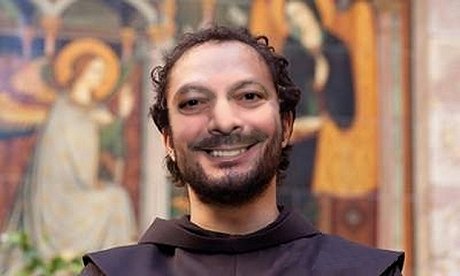|
|
Merciful Mothers and Gregorian Reggae
St.Tosia has a well functioning health care system. The modern 75-bed fully equipped hospital of the island belongs to the Hospices of St.Tosia
which is part of the Catharsis Monastery. At the Hospices of St.Tosia, the elderly, disabled and sick people, orphans, women about to give birth
and the destitute have all been uninterruptedly welcomed for treatment and refuge, from the foundation until today. Medical insurance did not
exist then when the Hospices was founded in the 17th century and is not required now either, no down payments for admission, no credit cards
and no invoices. It saves the hospital the costs of a bureaucratic administration apparatus. No need to show an ID because every needy individual
is a person first. The patient gets what is needed, period. The Hospices was and is still financed by donations of grateful families of patients
and generous benefactors which sometimes were pirates in the good old days way back when and nowadays are often offshore investors.
The Hospices de St.Thosia was founded by Bonne Soeur Aubrey de Beaune who was so disturbed by the variety of abuse she experienced during her
four week sailing trip from the French port of Nantes to the Caribbean colony of Guadalupe in 1635 that she decided to distance herself from
her partner and managed to escape to St.Tosia where she entered the Order of Catharsians. The Catharsian nuns on the island are also known
as "Merciful Mothers of the Innocent Lambs" and are devoted medical missionaries to who medical support and care is a calling and not a
business. From the very beginning the "Merciful Mothers" who operate the hospital have opened their establishment for the education of
young ladies and is known as the "Convent of the Innocent Lambs". Many young brats from the island have learned from their saintly health
practicing teacher lessons which have fortified them for their duties in the world.
The Catharsis Monastery crowns the rugged Kalinago Hill on the most northern part of St.Tosia and was constructed on top of an older pagan
site of the Carib Indians who have populated the island about 1200 AD but were later displaced by the European conquerors by warfare and
extermination. However on an old manuscript in the library of the monastery explains that the reason for the construction on the hilltop
was to remind monks 'of the ascent they must make in their life'. The somewhat tilting Bell Tower of the chapel next to the cloister is one
of the most significant landmarks of the Caribbean. Every 15 minutes "La Nina", the high voice small bell in the chapel tower rings; one ding
for quarter past the hour, two dings for the half hour, three for quarter to, and four signaling that the full hour was reached and then it
was followed by the one to twelve dongs of "La Nonna", the big bell, indicating the hour. Fifteen minutes before a worshiping service in the
chapel there is a whole minute of dingdonging.
On the way up the meandering road to the monastery you cannot help but notice you are disconnecting yourself from the turmoil below. The
silence becomes palpable as the houses are now few and far between. It is one of the most peaceful and tranquil places on the Island where
the environment is outright serene. The views from the hill top to the sea are breath taking and the atmosphere is invigorating.
The Catharsis Monastery complex encompasses not only the religious buildings, but also a farm, a home for the aged, a drug rehabilitation unit
and of course the Hospices with its modern Hospital.
The Order of Catharsians allows both monks and nuns; a mixed bag you might call it. The Catharsis Monastery is currently headed by Prior Petrus
and Abbess, the Reverent Mother Dominiana. To become a Catharsian Nun or Monk, the desire alone does not suffice. She or he alone enters the
order who has felt a call in the very center of the soul which is more powerful than any of the contradictory forces within and around her or
him; a rule which may not always be easy to stick to on an island like St.Tosia.
Whereas the nuns are devoted to health care and prayer, the monks are under slightly different types of vows and spend less time in prayer and
more time in farming, manual labor and undertaking physical repairs provide assistance to the monastery community and managing supplies; monks
of all trades so to say. During the daily evening messes the Gregorian chants of the monks permeate the entire compound and mesmerize anyone
wherever they might be. They sing like heavenly angels. That is not surprising because before the evening mess there is a "Happy Hour" and it
is the only time of the day that the consumption of alcoholic beverages made at other monasteries like the fine French liquors Chartreuse and
DOM Benedictine and Trappist Beer of the Westmalle Abbey in Belgium are allowed, as well as smoking of incense cigars that spread the sweet
perfume similar to that of patchouli oil and high-ascending smoke. It is all solely employed for the divine purpose of worship and lifting
the spirits of this celestial community. The other day, as he inhaled the blessed aromatic odor, the 85 year old and somewhat conservative
Friar Augustin said that he believed that it smelled like burnt lawn clippings. The younger and more liberal Friar Sunshine, who is in charge
of cultivation of herbs and spices in the Clairvaux type cloister gardens, hid a big grin behind his face hair.
| Friar Sunshine |
|
 |
The Carthasian monks of St.Tosia have rereleased several CDs of Gregorian Reggae Chants that evangelize Caribbean Reggae. Their songs are well
sold worldwide on Spotify under their group artist name of "The Barefoot Friars". The custom of chanting unshod was introduced by Prior Petrus
several years ago who also believes that Pope Gregory the Great, who gave his name to Gregorian music in the early Middle Ages, would be proud
if he could hear the Friars from St.Tosia sing their Gregorian Reggae interpretations. The album "Rocksteady Gregorian Reggea" of "The Barefoot
Friars" made it to the Billboard 100 for ten consecutive weeks and the solo song "Cantus Calypso Gregoriani" by the white-bearded Friar Eucredo
became an instant smash in the Caribbean as soon as it hit the airwaves. The well-known magazine commented that if you let the Friars on bare
feet lose on stage, they are wild crowd pleasers.
It should not come as a surprise that the Friars have their own float in the St. Tosia Carnival Parade and the amplified Gregorian Reggae Chants
appeal to the cheering crowds who are hard-driving uncontrollably off the beat.
The funds earned from royalties and group appearance fees are another form of financial support of the Monastery. After all, it was founded on
the principles of self sufficiency. In that regard it should also be mentioned that the handmade Sandals of the Catharsian Monks are sold in
all the souvenir shops of St.Tosia and cruise ship gift shops as "orthotic friendly flip-flops".
It was in 1925 that the renowned rum runner Walter 'Wally' Britches, owner of the only rum distillery on the island and the sanctuary's Prior
Primus decided to hold a Charity Rum Auction which is now still held in November each year. Rum distilleries from the neighboring islands
would donate rum in a barrel that yields approximately 288 standard 750 ml bottles which translate to 24 cases of 12 bottles. After the sale
the rum will remain in the cellars of the Monastery to mature in the barrels for a year or two; it will then be bottled, labeled, and packed
up for shipment mainly to the USA. The label on the bottles features the prominent crest of the Hospices de St.Tosia, as well as, the name
of the company who bought the rum. Although the prestigious week-end surrounding the Charity Rum Auction has become a vanity event, the funds
go to support the benevolent works of the Monastery of St.Tosia.
Cdr. Bud Slabbaert
|
 |
|
|
|